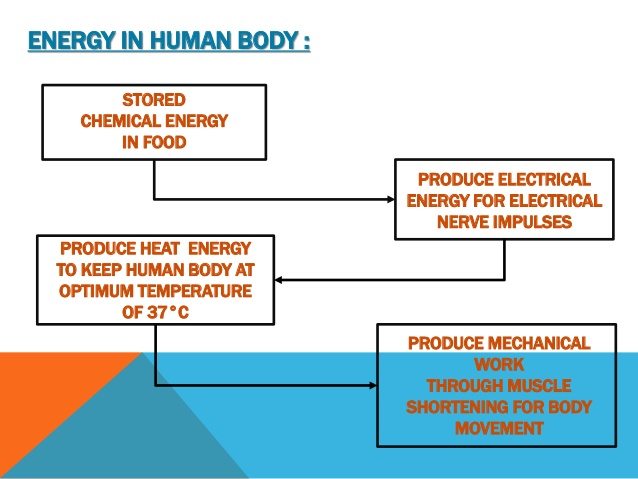Power training is one of my favorite subjects and this article is only going to cover a fraction of what I can teach on the subject. An article on the bare essentials seems quite necessary because there is a massive amount of confusion and mystery that surrounds “power” training. That’s too bad because power is a critical component of physicality and performance. In fact, it is said that the key to winning revolves around the athlete’s ability to harness power and it’s true. But what exactly is power and why does it matter so much? My objective here is to simplify the matter so that more people can take advantage of proper power training.
I want to begin by pointing out that the featured image for this article is of Ueli Steck. He is perhaps the greatest power athlete in the world right now. He doesn’t lift weights, he speed climbs mountains at a pace once assumed to be beyond impossible. I wanted him to be the poster child here because this is the image of power you need to come back to any time you see or hear the word!
To begin with, we must understand what power actually is. That means we must turn to the scientific field of physics. In physics, POWER is the RATE at which WORK is being done. It is the work/time ratio. In mathematics it is calculated using the following equation: Power=Work/time (P=W/t).
It is critical to understand that the act of creating and sustaining motion requires energy. The standard metric unit used to measure power is the Watt. A unit of power is equivalent to a unit of work divided by a unit of time. Thus, a Watt is the equivalent to one Joule per second because work is measured by the energy measurement of a joule. Confused yet? Don’t be! Just understand that every time you do anything it requires energy. That energy can be measured in several different ways and understood from multiple aspects. For example, the amount of force required to push a 100lb stone ball is much more than the force required to push a 10lb stone ball. To generate that force, more calories needed to be burned to transform the energy from sugar into forceful body movement sufficient to move each object. That is important to remember because energy can never be destroyed, only transferred. Thus in certain scientific fields we are always asking where the energy is coming from, where it is going and how. I just need you to grasp the fact that in humans, we derive our mechanical energy from biochemical reactions in the muscle with sugar as our primary energy source.

With that said, what requires more energy, lifting 100lbs at a rate of 1 meter per second (m/s) or 1.4m/s? The answer is 1.4m/s because while the weight is the same, the rate or speed of movement is higher. It takes more force (energy transfer) to achieve the higher speed and more force has to be fueled by something. In this case, the body had to burn more energy to achieve the increased rate.
At this point several things should be dawning on you. The big one I want to press home to you is that speed (rate) is dependent on power output. Consider two runners (see chart below).
Variables | Runner #1 | Runner #2 |
Distance | 2 miles | 2 miles |
Time | 14:00 | 12:00 |
MPH | 8.57mph | 10mph |
| Min/Mile | 7:00/mile | 6:00/mile |
Both runners ran the same 2 miles on the same track. But Runner #2 finished the same distance two full minutes faster. His rate of movement (speed) was greater, thus the force production was higher to generate the speed, and the rate of repetitive force production was higher to maintain the speed. Thus Runner #2 was able to sustain higher power output for this event resulting in a significant victory.
Let’s examine another example that involves running. If you’ve ever watched football you’ve seen a play where a receiver catches the ball and then leaves his pursuers in the dust as he runs for the end zone. What you have witnessed is a receiver with far greater power output than his opponents. That higher power output allowed him to pull away and score. This is why, in competition of any kind, the athlete with this highest power output combined with highest technical skill wins.
Now we run into a curious situation. That situation is one of preparation. What have we prepared for? It is a common thing in the fitness industry to speak of the benefits of power training and explosive lifting. However, because they have no idea what they are talking about they relegate power training to high percentage of 1 repetition maximum loads and low reps. Most of the literature refers to these strength sport numbers and few if any realize this is completely worthless for any other activity like running or becoming a great soldier. There are some critical elements of power training that must be understood of you are going to use it.
The first thing we have to understand is that specificity matters. High percentage of 1RM and low rep power training does not in any way carry over to a better run or ruck march time. However, low percentage of 1RM and very high rep range does. It’s even more effective if the drill involves the exact same motor pattern. That is why hill runs and hill sprints have always been a staple of professional runners. They are technically superior to 100-300 rep squat sets with half your body weight, which was part of an incredibly effective program that Soviet middle distance runners used. Then again, a long term program that carefully incorporates both leads to world champions.
The second thing that we must understand is that power training is both essential to great performance regardless of your goal and very risky. Since the beginning of physical culture, it has always been advised that everything you do be done so vigorously. Vigorously is another way of saying quickly. Not at maximal speed, but not slow in any way. Long before modern labs existed they knew that nothing in nature happens slowly. But on the other hand, you have to be careful. Until your tissues are well conditioned to handle the stresses of power, you have to learn to take it easy. Recovering from power training takes the longest time depending on how much power is involved and that depends on the load and speed (or both) employed.
Now let’s talk specifically about performing power training. When training for power you need to understand the impact of the activity you’re performing. There is always a certain power output for all activity. However, there is also a threshold where things start to fall apart. For one, your form and technique deteriorate rapidly when you push too hard and/or too far. As we all know, the moment this happens you need to call it quits. Every rep performed in bad form is a step backwards, not forwards. Associated with this is a rapid decline in the muscle’s ability to maintain power output. You are forced to slow down or, in the case of higher speed and load, there is an abrupt drop in ability. You cannot push through this so don’t even try. When this happens you have caused a great deal of distress to the muscle tissue, the physiological environment and the nervous system. Anything you do will be at a lower level of technique, skill and output. This is a recipe for disaster so never push this. It’s not hard core, it’s not a sign of manhood, it’s f-ing stupid and gets you nowhere.
Here are some great examples of simple power training used in professional circles:
- Hill runs: Pick a short hill. After properly warming up, run the hill at a pace you can sustain and time it with a stopwatch. Plug that time into your watch timer. Rest five minutes or until your heart rate drops to between 110-120bpm. Run it again and try to beat the timer by just a little bit. If you were running hard enough the first time you should only be able to get a few of these done before your timer beats you. Cool down and stretch.
- Ruck March Fartlek: Set out on a sensible ruck march distance or time with an appropriate load. The majority of the ruck will be performed in your Max Aerobic Function (MAF) zone (the 180-age method from Dr. Maffetone). Every 5-10 minutes step it out as fast as you can without running for 2 minutes and then resume your old pace at MAF. When it comes to appropriate load, here is how you know: when walking as fast as possible you want your heart rate to hit your interval heart rate zone.
- Resistance training: I call this the Power Output Method or the Force Production Method. First, perform each lift as fast as you can while maintaining the absolute best technical skill possible. You should be performing a specific number of reps per set. Let’s just say today it happens to be 10 reps per set with 185lbs in the bench press. Keep track of your reps and watch your form carefully. You hit 10 reps on set 1, 2 and 3. But set 4 you only get 9 reps. Stop what you’re doing. You’re done for today. Anything more will see technique go bad and reps decrease. This can be used to equal effect regardless of the speeds you use. It can also be used for sprinting. When your time slows by more than a few tenths of a second, call it a day.
Now let’s look at a couple interesting examples of power training mistakes. The key concept to remember is “rate” (speed). Consider what you might be inspired to do carefully. For example, there is often a tendency to convince yourself to add more weight because you read that it takes more power to move more weight. Most people forget the part where they have to move that heavier weight at the same speed! What most do is add weight and slow down! Thus they are not performing power training. What a waste… IMPORTANT NOTE: It’s always better to increase the duration before the load or speed!
Another example is the fact that most people are emotionally obsessed with perceived exertion. They think that if they are giving it everything they have, then that are being hard core and the quality of training is higher. They’re dead wrong. No one told these guys and gals that true hard training of maximal value is maintaining power output, being a slave to a metronome, staying within a specific heart rate zone and maintaining speed and skill level at the same time. Any idiot can destroy themselves in the gym setting (just go watch Crossfit). Those gym antics are pathetic and get you nowhere. Instead, try a triathlon or summiting four 14,000ft mountains in a 24-hour period sometime. The disciplined actions listed above are the hallmarks of a true professional athlete or special operator.
While just scratching the surface, I hope this article helps you to understand the basics of power training. Here is the least you need to know.
- Power output is required for all physical activity.
- Skillful power output is what makes champions.
- Power training must be as specific to the activity as possible across all variables.
- Power training should always be conducted so that training is stopped when power output decreases to optimize the training effectiveness and to optimize recovery.
- Always increase the duration before the speed or load.



